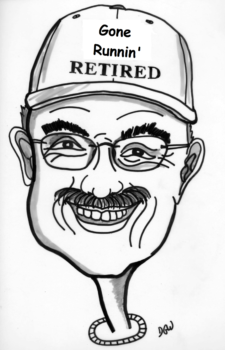Are you ready for an Economics quiz?
I have three economic questions. Give them a try.
#1) Grade 91 to 100 = A, 81 to 90 = B, 71 to 80 = C, 61 to 70 = D, 0 to 60 = F what is the best percentage score you can get on an economics test?
#2) What is the biggest business factor that creates inflation?
#3) Why are gas prices so high?
Answer #1) 91%.
Using the theory of marginal utility, you have a limited resource of study time. At 91%, you allocated just enough of your time to accomplish a top mark. You can spend your remaining time studying other subjects. By scoring 91%, you mastered the concepts of economics.
Answer #2) An increase in labor costs has the most significant impact on inflation.
Our last bout of inflation occurred in the 1970s. At that time, labor unions were negotiating contracts with businesses to include increases in wages and benefits. Higher prices followed.
The contract with west coast longshoremen has expired, effective July 1, 2022. They are still working while in contract talks. With the current level of inflation, the cost of their labor should be increased. And a strike will provide massive supply chain shortages.
On May 1, 2021, the Virginia minimum wage increased to $9.50 per hour. It was raised again on January 1, 2022, to $11 per hour. It is scheduled to increase by $1 per year for the next four years.
Most retailers and restaurants pay their employees the minimum wage. These businesses increased their menu and product prices to offset the higher labor costs.
It is a neverending spiral. An increase in wages increases prices. Even with more money in their pockets, workers can’t afford more things than they could before their pay increased.
Answer #3) Because that is what you are willing to pay
If you are not willing to pay, you won’t.
Some people say they need to buy gas to get to work. In that case, the question is not how much they are willing to pay for gas but how much they are willing to pay to get to work. There are many alternative methods to get to and from work. They need to consider the cost of time and convenience.
How about public transportation, carpooling, bicycles, or your own two feet?
Using supply and demand theory, the price for a product is based on the most a buyer is willing to pay, and the least a seller is willing to accept. If buyers leave the market, there will be more available units, and the sellers will reduce their least acceptable price.
In the past year, a chip shortage has created shortages in new cars and trucks, which has also reduced the supply of used cars. Sellers increased the prices of both new and used vehicles.
At the same time, the post-COVID housing buyers have reduced inventory and driven up prices. Some prices are well above the actual sustainable value. Well, if somebody is willing to pay the price, I guess the house does have that value.
Gas, cars, and houses can be considered wants rather than necessities. I put food in the want category, too.
Rather than complaining about the high prices and continuing to drive inflation, figure out what is needed and stop spending on wants. Prices may come down.
A prediction, the price of regular gas in Fredericksburg will be lower than $3.25 per gallon on October 20, 2022.
